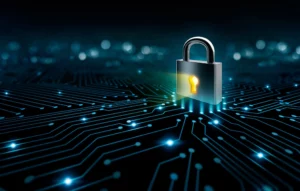Cyber investigations have become crucial for solving cybercrimes and catching tech-savvy criminals. As cyberattacks increase in frequency and sophistication, understanding cyber investigations can help keep your data and devices more secure. This guide will provide an in-depth look at all you need to know about cyber investigations.
You’ll learn about:
- The different types of cyber investigations
- Steps involved in a typical investigation
- Common investigation tools and techniques
- Challenges investigators face
- Best practices for assisting investigations
- Real-world examples and case studies
Equipped with this knowledge, you can better protect yourself online, cooperate with cyber investigations if needed, and even explore a career in this cutting-edge field. Time to dive in!
Types of Cyber Investigations

Cyber investigations can cover a wide range of cybercrimes and incidents. The core types of investigations include:
Criminal Investigations
These investigations aim to gather evidence on cybercrimes like:
- Hacking: Breaking into networks or devices using technical exploits
- Malware attacks: Infecting systems with viruses, ransomware, or other malicious software
- Phishing/social engineering: Tricking users into sharing login details and other sensitive data
- Online fraud: Scams designed to steal identities, money, or information
- Cyberbullying/harassment: Using digital means to repeatedly intimidate or threaten someone
The goal is to identify the attack vector, preserve evidence, locate the perpetrator, and build a legal case.
Incident Response Investigations
These reactive investigations assess cybersecurity incidents in corporate or organizational networks, such as:
- Data breaches: Sensitive business or user data being exfiltrated
- Network intrusions: Attackers infiltrating business systems
- Insider threats: Employees stealing data or sabotaging systems
The priority is containing incidents, eradicating threats, restoring services, understanding root causes, and preventing future recurrence.
Digital Forensics Investigations
Forensics specialists analyze digital artifacts and systems to support investigations and legal proceedings through objective evidence. Common examples include analyzing:
- Storage media: Hard drives, memory cards, thumb drives, cloud storage
- Mobile devices: Cell phones, tablets, GPS devices
- Network traffic: Packet captures, proxies, firewalls, logs
- Wireless signals: Wi-fi, Bluetooth interactions
The goal is recovering key technical evidence other specialists may use to further investigations.
Steps in a Typical Cyber Investigation
While each case is unique, most cyber investigations will include the following key phases:
1. Identify the Incident
Investigations start with the detection of abnormal or suspicious cyber activity, whether a targeted attack, user reported incident, flagged network anomaly, or other observable event.
2. Preserve Evidence
Quickly preserving state at the scene is crucial so evidence cannot be destroyed or tampered with. Steps include isolating affected systems, securing physical evidence, and creating disk images.
3. Evaluate Scope and Initial Impact
Investigators assess affected resources, establish what information was accessed/modified, determine outages caused, and identify immediate remediation steps. First responders contain the incident.
4. Trace Technical Evidence
Analysts trace evidence left throughout affected systems to reconstruct methods, uncover indicator patterns, establish timelines, identify compromised assets, and locate other impact artifacts.
5. Determine Root Causes
Skilled investigators synthesize identified evidence to determine root causes, pinpoint vulnerabilities exploited, unpack technical means and tools used, establish motive and goals, and reveal other answers.
6. Identify Responsible Parties
Research links threads of evidence to likely suspects through digital fingerprints, attack patterns, geolocation data, financial trails, social connections, corroborating intelligence, confessions, and other links.
7. Support Legal Action or Remediation
Evidence and findings may support formal charges against criminals as prosecutors build legal cases. Internally, outcomes inform remediation efforts across people, processes, and technology.
Key Tools and Techniques

Cyber investigations leverage a wide technical toolbox to gather, analyze, reconstruct, and make sense of complex evidence. Common tools and techniques include:
Digital Forensics Tools
- Data recovery software: Pulls deleted data from storage media
- Forensic toolkits: Gather and decrypt files, volumes, memory, user data, registry logs, network traffic, and more. Popular examples include EnCase or FTK.
- Imaging: Securely duplicates data (e.g. bit-level disk/file images) for clean preservation and analysis.
- Mobile device forensics: Access and examine mobile device data like messaging apps, location history, app data, etc. that may be investigation-relevant
- Network forensics: Inspects network traffic via packet sniffers, intrusion detection systems, firewall, and proxy logs.
Surveillance Monitoring
- Network monitoring: Analyze traffic flows, connections, domains, apps, etc. for anomalies.
- Behavior profiling: Develop normal baselines for entities like users, endpoints, and networks to better flag deviations.
- Honeypots/honeynets: Decoy sites, systems, and networks designed to attract attacks for monitoring purposes.
- Wiretapping: Intercepting digital communications like VoIP, instant messaging, etc. (typically requires legal sign-off).
Digital Tracking
- Scanning tools: Identify live hosts, open ports, services, vulnerabilities.
- Location tracking: Trace IP addresses, cell signals, WiFi networks, GPS coordinates, EXIF image metadata etc. to determine physical locations.
- MAC address tracking: Trace device hardware MAC addresses via router tables and wireless networks.
- Log analysis: Review firewall, DNS, application, and operating system log files.
Open Source Intelligence Analysis
- Public record sources: Correlate information from domains, websites, social media, public filings, job postings etc.
- Big data analysis: Apply data mining, machine learning, visualizations and statistics to surface non-obvious patterns and answers amidst massive datasets.
- Crowdsourcing: Leverage public volunteer assistance (where appropriate) for mass content review, pattern identification, connections to other leads etc. that would otherwise be unfeasible.
Key Challenges for Investigators
Cyber investigations pose unique challenges not found in traditional cases. Common struggles include:
- Sophisticated adversaries who know tools, techniques, and methods to impede investigations, bypass controls, plant false evidence trails, leverage encrypted communications channels, etc. Staying steps ahead requires constant researcher.
- Significant volumes of data requiring review and analysis in forensic images, historical logs, etc. Advanced analytics and review prioritization is key.
- Highly technical evidence trails requiring specialized expertise across devices, applications, protocols, malware, vulnerabilities exploitation techniques etc. Investigators constantly expand skills.
- Cross-border barriers when companies operate internationally or threat actors are abroad, limiting evidence acquisition and enforcement cooperation.
- Going it alone when organizations avoid publicizing breaches. Collaboration helps strengthen defense across interdependent ecosystems.
- Unrealistic expectations set by executives or the public unfamiliar with actual investigation workflows, pace of progress, outcomes, and other realities. Education helps set accurate expectations.
- Evolving technologies like decryption-resistant encryption schemes, anonymous networks/cryptocurrencies, anti-forensics etc. continually challenges techniques. Again, ongoing researcher tackles shifting landscapes.
While surmountable through expertise, patience and partnerships, these factors demonstrate why successful cyber investigations require specialized skills.
Assisting Cyber Investigations

If caught up in a cyber investigation, either as a victim or key witness, you can greatly assist case success by:
1. Preserving evidence integrity. Avoid tampering with devices and data. Don’t log in, access files, or otherwise alter state until approved by investigators.
2. Disclosing details fully and honestly. Even small omissions or deceptions waste analysis effort down wrong paths. Tell the truth, even when inconvenient or embarrassing. Let them filter relevance.
3. Timely executing requests. Investigations follow rigid legal processes with deadlines. Respond supportively to evidence or interview requests in a reasonable timeframe.
4. Proactively offering relevant details that may have been missed saves effort. If you uncovered useful artifacts during troubleshooting, noticed suspicious behaviors, or made other key observations, speak up proactively.
5. Asking questions if anything seems unclear regarding requests, process specifics, reasons, expected outcomes etc. Better addressing unknowns upfront than risking bad assumptions.
Essentially, cooperate fully and transparently. Rather than viewing involvement as an annoyance or liability exercise, recognize it fuels learning to prevent repeat incidents. Approached collectively, cases can strengthen institutional security and resiliency.
Case Studies
Understanding cyber investigations in action often clarifies concepts quickest. Let’s analyze two impactful cases:
Target Data Breach
This 2013 breach saw hackers infiltrate Target payment systems and exfiltrate 70 million credit card details. Forensic analysis determined entry via a third-party HVAC vendor with lax controls. Key lessons:
- Interconnected ecosystems multiply risk. Weak links provide entry to stronger parties they connect to. Always vet partners’ security.
- Spotting anomalous behaviors early is key. Target missed signals like the flood of unusual POS device installations needed to harvest data quickly pre-theft. Tune detection to notice small oddities, don’t just watch for known threats.
FBI iPhone Encryption Dispute
This 2016 case dealt with an iPhone 5C tied to San Bernadino shooters. The FBI desperately wanted data on it but couldn’t bypass Apple’s encryption. Key takeaways:
- Encryption poses increasing barriers to digital forensics. With unbreakable schemes on the rise, investigators lose access to crucial sources.
- Legal pressures on technology firms to build backdoors will only intensify. This pits software defenses protecting all users against threats vs. public safety needs in isolated cases. Debates continue, but weakening encryption broadly would cause more harm than good.
Both cases showcase challenges cyber investigations face trying to balance security, privacy, public safety, and other factors across a messy, interconnected landscape. The complex balancing act will only grow thornier as technology progresses.
Starting a Cyber Investigations Career

Interested to help address growing cybercrime? Getting into cyber investigations could be an exciting career path. Here’s what you need to know to get started:
Important Skills
First, you’ll need to develop core skills through education and hands-on experience:
- Digital forensics: Reconstruct digital artifacts through technical examination of systems and data analysis. Master popular tools like EnCase or FTK.
- Stats/data science: Identify meaningful patterns and insights amidst massive, complex datasets using statistical analysis, data mining, machine learning, and data visualization skills. Python proficiency is a huge plus.
- Programming: Code little tools to extract digital evidence, reconstruct sequences of events, unpack malware, analyze network traffic, and more. Languages like Python, SQL, Javascript, Bash, and C++ are very useful.
- Networking protocols: Understand inner workings of HTTP, DNS, SMTP, SSH, FTP, VoIP, Bluetooth, Wi-Fi, cellular signaling protocols, and other networking building blocks. GOOD
- Cloud platforms: As assets migrate online, learn to gather and analyze evidence from platforms like AWS, Azure, Google Cloud, Office 365, G Suite, and more.
- Distributed systems: Study blockchain, cryptocurrencies, decentralized apps, distributed databases like IPFS, and other emerging decentralized technologies that introduce new investigation challenges.
Cross-disciplinary expertise bridges old-school hacking skills with modern data science finesse. Plan to constantly build breadth across technical domains.
Certifications
Industry certifications validate capabilities on paper through standardized exams:
- Certified Cyber Forensics Professional (CCFP) covers forensic processes, device/media analysis, data recovery, and legal/ethical practices.
- (C|EH) teaches hacking tools/techniques useful for replicating and understanding cyberattacks more intimately.
- Certified Information Systems Security Professional (CISSP) is considered the information security industry’s gold standard certification.
- Certified Information Systems Auditor (CISA) focuses more on governance/risk/compliance domains useful for formal incident response conduct.
Certification training builds tangible expertise while clearing resume hurdles at many organizations.
Getting Hands-On Experience
Don’t just study concepts – get hands-on with investigations! Options include:
- Internships: Look for university partnerships with government agencies and technology companies. For example, know of an excellent internship program that Paypal offers at San Jose State University.
- Bug bounties: Hone offense-oriented research skills used by many forensics analysts by finding vulnerabilities through bug bounty programs offered by platforms like HackerOne.
- CTFs: Sharpen technical skills hands-on via capture the flag competitions like those organized by SANS Institute.
- Home labs: Build an at-home lab with spare computers, networking gear, storage drives and freely available cyber investigation toolkits. Practice evidence gathering/analysis.
- Side-projects: Create an anonymous cryptocurrency wallet and transaction history tied to bogus persona. Attempt de-anonymizing yourself through public blockchain analysis as practice. Set up a web server and deliberately hack yourself while practicing covering tracks then work on uncovering and documenting what happened during post-mortem.
repeated twice Get creative in seeking opportunities to learn cyber investigation workflows.
Finding Jobs
With education, certification and experience secured, common launchpads into an investigation career include:
- Law enforcement at federal (FBI, Secret Service etc.), state, or local levels
- Private cybersecurity firms supporting Fortune 500s and other clients with incident response and forensics operations
- Consulting agencies providing cyber expertise, breach support, and digital forensics services to enterprises
- Cyber insurance companies needing forensic expertise to process claims and litigation
- Television/movies as technical experts ensuring realistic, validated depictions of cybersecurity events and investigative sequences
- Cybercrime support services assisting victims with activities ranging from threat monitoring to full-fledged forensics-backed lawsuits, such as those offered by CyberScout.
Roles may start as SOC analysts, escalating into incident response and forensics-oriented positions with demonstrated skills.
Ongoing Learning

Given rapidly evolving technologies, expect continual learning. Follow best practice sites like SANS Institute reading room for case study writeups. Attend real-world forensics conferences like DFDRWS. Leverage peer communities to exchange ideas, for exampleparticipating in subreddits like r/computerforensics.
Staying atop developments in this dynamic domain ensures you can take on tomorrow’s cyber challenges.
Final Thoughts
Cyber investigations play a significant role in assessing incidents, identifying perpetrators, preserving digital evidence, determining root causes, driving remediation, and delivering justice.
This guide summarised the key types, steps, tools, techniques, challenges, and real-world examples to know. While complex, insights equip you to better protect your data, assist investigations successfully if one involves your organization, and even consider an intriguing career direction as cybercrime surges worldwide.
Stay alert – and consider adding cyber investigation skills to your personal security toolkit!

